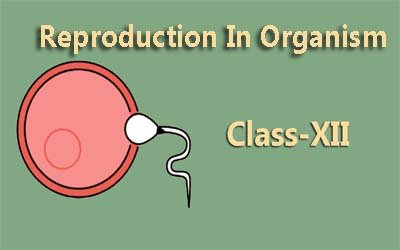Evolution - Class 12
Evolution in Class 12 Biology refers to the gradual change in populations of living organisms over time. It's the idea that all life on Earth shares a common ancestor and has diversified through a process driven by: Genetic Variation: Individual organisms within a population have slight variations in their genes due to mutations. These variations can be passed on to offspring. Natural Selection: Organisms with traits better suited to their environment are more likely to survive and reproduce, passing on those favorable traits to their offspring. Over generations, this leads to a gradual change in the population towards traits that enhance survival and reproduction in that specific environment. This course explores the mechanisms and evidence supporting evolution, including: The Theory of Natural Selection by Charles Darwin and Alfred Russel Wallace Fossil Record - Evidence of past life forms preserved in rock Comparative Anatomy & Embryology - Similarities in body structures and development across species Biogeography - Distribution of life forms across the globe By understanding evolution, you gain insight into: The diversity of life on Earth Adaptation of organisms to their environment The process of speciation (formation of new species) Extinction of species দ্বাদশ শ্রেণীতে বিবর্তন জীববিজ্ঞান বলতে সময়ের সঙ্গে সঙ্গে জীবের জনসংখ্যার ক্রমবর্ধমান পরিবর্তনকে বোঝায়। এই ধারণাটি হল যে পৃথিবীর সমস্ত জীবন একটি সাধারণ পূর্বপুরুষকে ভাগ করে নিয়েছে এবং এর দ্বারা চালিত একটি প্রক্রিয়ার মাধ্যমে বৈচিত্র্যময় হয়েছেঃ জিনগত বৈচিত্র্যঃ একটি জনসংখ্যার মধ্যে পৃথক জীবের মিউটেশনের কারণে তাদের জিনে সামান্য বৈচিত্র্য থাকে। এই বৈচিত্রগুলি বংশধরদের মধ্যে প্রেরণ করা যেতে পারে। প্রাকৃতিক নির্বাচনঃ যেসব জীবের বৈশিষ্ট্য তাদের পরিবেশের জন্য আরও উপযুক্ত, তাদের বেঁচে থাকার এবং পুনরুত্পাদন করার সম্ভাবনা বেশি থাকে, তাদের বংশধরদের কাছে সেই অনুকূল বৈশিষ্ট্যগুলি প্রেরণ করে। প্রজন্মের পর প্রজন্ম ধরে, এটি জনসংখ্যার বৈশিষ্ট্যগুলির প্রতি ধীরে ধীরে পরিবর্তনের দিকে পরিচালিত করে যা সেই নির্দিষ্ট পরিবেশে বেঁচে থাকা এবং প্রজননকে বাড়িয়ে তোলে। এই কোর্সটি বিবর্তনকে সমর্থনকারী প্রক্রিয়া এবং প্রমাণগুলি অনুসন্ধান করে, যার মধ্যে রয়েছেঃ চার্লস ডারউইন এবং আলফ্রেড রাসেল ওয়ালেস দ্বারা প্রাকৃতিক নির্বাচন তত্ত্ব জীবাশ্ম নথি-শিলায় সংরক্ষিত অতীত জীবনের প্রমাণ তুলনামূলক অ্যানাটমি এবং ভ্রূণবিদ্যা - দেহের কাঠামো এবং প্রজাতি জুড়ে বিকাশের মধ্যে সাদৃশ্য জীবভূগোল-বিশ্বজুড়ে জীবন রূপের বিতরণ বিবর্তন বোঝার মাধ্যমে, আপনি নিম্নলিখিত বিষয়গুলি সম্পর্কে অন্তর্দৃষ্টি অর্জন করতে পারেনঃ পৃথিবীতে জীবনের বৈচিত্র্য পরিবেশের সঙ্গে জীবের অভিযোজন প্রজাতিকরণের প্রক্রিয়া (formation of new species) প্রজাতির বিলুপ্তি
English
Last updated
Wed, 27-Nov-2024



















